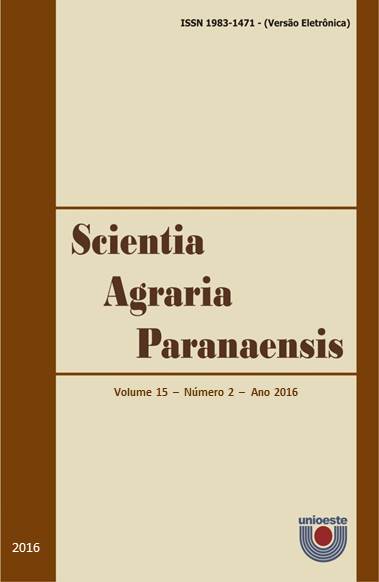Effects of gypsum application and fertilization with boron on the yield components of peanut
DOI:
https://doi.org/10.18188/sap.v15i2.11419Keywords:
Arachis hypogaea, cálcio, boroAbstract
The cultivation of peanut is usually carried out in sugarcane renovation area, where soils commonly present depleted after successive sugarcane cultivation and the exhaust is more intense in tropical sandy soils, resulting in low basic cations (Ca) and micronutrients (B). In this context, the aim of this study was to evaluate the effects of gypsum and fertilization with boron on yield components of peanut. The experimental design was a randomized block, with treatments arranged in split-plot, the plots were made gypsum surface in the amount of 0; 0.5; 1.0 and 2.0 ton ha-1, and the subplot foliar applications of boron, in doses of 0; 0.5; 1.0 and 2.0 kg ha-1. At 122 days after sowing in the physiological maturity of the grains were evaluated pod yield and grain yield, percentage of yield, number of pods per plant, number of seeds per pod and weight of 100 grains. There were no significant effects of the application of gypsum surface on peanut yield components, already borated fertilization promoted increases on the number of pods per plant, pod yield and grain yield, and the best productive performance of peanut was given at doses between 1.0 and 1.1 kg ha-1 B.
Downloads
Published
How to Cite
Issue
Section
License
Aviso de Direito Autoral Creative Commons
Política para Periódicos de Acesso Livre
Autores que publicam nesta revista concordam com os seguintes termos:
1. Autores mantém os direitos autorais e concedem à revista o direito de primeira publicação, com o trabalho simultaneamente licenciado sob a Licença Creative Commons Attribution que permite o compartilhamento do trabalho com reconhecimento da autoria e publicação inicial nesta revista.2. Autores têm autorização para assumir contratos adicionais separadamente, para distribuição não-exclusiva da versão do trabalho publicada nesta revista (ex.: publicar em repositório institucional ou como capítulo de livro), com reconhecimento de autoria e publicação inicial nesta revista.
3. Autores têm permissão e são estimulados a publicar e distribuir seu trabalho online (ex.: em repositórios institucionais ou na sua página pessoal) a qualquer ponto antes ou durante o processo editorial, já que isso pode gerar alterações produtivas, bem como aumentar o impacto e a citação do trabalho publicado (Veja O Efeito do Acesso Livre).
Licença Creative Commons
Esta obra está licenciada com uma Licença Creative Commons Atribuição-NãoComercial-CompartilhaIgual 4.0 Internacional, o que permite compartilhar, copiar, distribuir, exibir, reproduzir, a totalidade ou partes desde que não tenha objetivo comercial e sejam citados os autores e a fonte.


